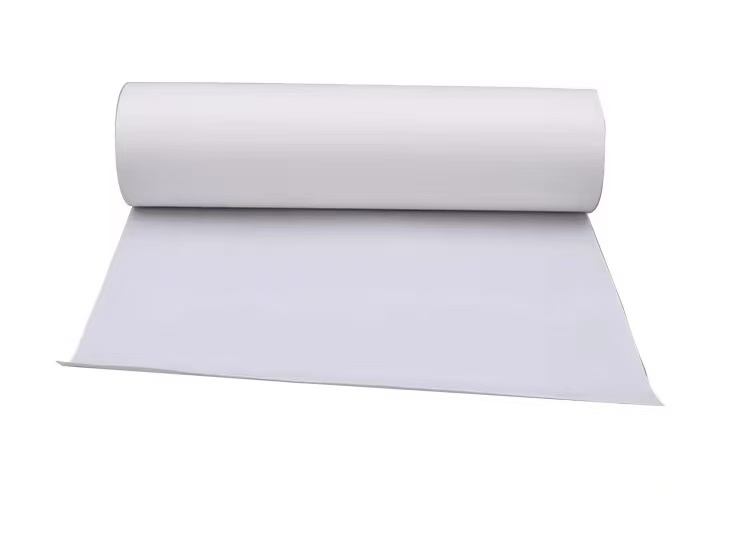The Future of Specialty Films: Innovations and Applications in Packaging, Printing, and Design
INDUSTRIAL SUPPLIES
2/25/20253 min read


Introduction: The Power of Specialty Films in Modern Industries
Specialty films are transforming industries across packaging, printing, design, and other sectors. From innovative materials like A-PET and PLA films to applications such as inkjet films, transfer films, and laminates, these films are playing a key role in enhancing product performance and sustainability. This article explores the diverse world of specialty films, focusing on their applications, benefits, and the future of these materials.
Understanding Specialty Films: What Are They and How Are They Used?
Specialty films encompass a variety of materials designed for specific applications. Whether it's for packaging, insulation, or printing, these films are engineered to meet precise requirements. Some of the most commonly used specialty films include A-PET, PLA film, and cellulose di-acetate. These films are used in a wide range of industries due to their unique properties, such as strength, flexibility, and environmental sustainability.
Packaging Films: Revolutionizing the Way We Protect and Present Products
Packaging is one of the largest sectors driving the demand for specialty films. Films like A-PET and cellulose di-acetate offer excellent barrier properties, making them ideal for protecting products from moisture, oxygen, and contamination. Additionally, PLA films, made from renewable resources, are becoming increasingly popular due to their biodegradable nature. These films not only improve the shelf life of products but also contribute to sustainability efforts in the packaging industry.
The Role of Laminates and Window Films in Modern Packaging
Laminates and window films are another critical component in packaging. These films enhance the visual appeal of products while providing additional protection. Whether used in food packaging or electronic devices, laminate films help preserve product integrity and increase durability. The use of window films, on the other hand, allows consumers to see the product inside the package, enhancing both the aesthetic value and consumer confidence.
Printing Films: Enhancing Precision in Screen and Offset Printing
Printing technologies, including screen printing and offset printing, rely heavily on specialty films. Films like inkjet films, laser films, and transfer films allow for precise image reproduction and vibrant color printing. These films are essential for creating high-quality prints for packaging, advertising materials, and even fine art prints. Transfer films, in particular, are used in transferring designs onto textiles, ceramics, and other surfaces.
Innovation in Films: Special Applications and Their Benefits
Specialty films aren’t limited to just packaging and printing. There are numerous other specialized applications where these films prove invaluable. Mirror films, for example, are used in both decorative and functional applications, such as creating reflective surfaces in automotive and architectural design. Films like visor films and template films have applications in industries ranging from automotive to healthcare, where high performance and reliability are crucial.
The Rise of Bio-Based Films: PLA and Cellulose Di-Acetate
As sustainability becomes an increasing concern, the demand for bio-based films is on the rise. PLA (Polylactic Acid) films, derived from renewable resources like cornstarch, are biodegradable and compostable, making them a great alternative to traditional petroleum-based films. Cellulose di-acetate films, another bio-based material, offer an eco-friendly solution for various applications, including medical and food packaging. These materials are not only sustainable but also offer the same high-quality performance as conventional films.
From Design to Presentation: The Versatility of Specialty Films
Specialty films are not just about function—they also play a crucial role in design and presentation. Films such as mirror films, template films, and printing films help create visually stunning products. Whether it's for enhancing product packaging or adding intricate designs to consumer goods, these films provide the flexibility needed for creative applications. The use of films in design not only adds aesthetic value but also serves as a tool for branding and marketing.
Electrical Insulating Films: A Key Player in Electronics and Automotive
Electrical insulating films are essential in protecting electronic components and ensuring safe operation. These films are used in everything from motors to capacitors and batteries. Their ability to prevent electrical faults while offering high resistance to heat and chemicals makes them indispensable in industries like electronics and automotive manufacturing.
Sustainability in the Film Industry: Reducing Environmental Impact
The move toward eco-friendly materials has led to a significant shift in the film industry. Manufacturers are increasingly focusing on creating films that are not only high-performing but also sustainable. Bio-based films like PLA and cellulose di-acetate are at the forefront of this trend, offering biodegradable and recyclable alternatives to traditional films. As consumers and businesses alike demand greener options, the industry is investing in innovative materials that reduce waste and environmental impact.
The Future of Specialty Films: Trends to Watch
The specialty film industry is evolving rapidly. Advances in material science and manufacturing processes are opening up new possibilities for these films. For example, the development of multifunctional films, such as those that offer both protection and enhanced performance, is gaining traction. Additionally, the demand for films with specialized properties, such as antimicrobial or UV-resistant films, is increasing. As industries continue to innovate, the future of specialty films is poised to be even more dynamic and exciting.
Conclusion: Embracing the Power of Specialty Films
Specialty films are more than just a product—they are a game-changer for industries ranging from packaging to printing, electronics, and design. With innovations like bio-based films and enhanced performance capabilities, these materials are setting the stage for a sustainable and high-performance future. Whether it's for packaging, printing, or specialized applications, specialty films are proving to be an indispensable part of modern industry.
